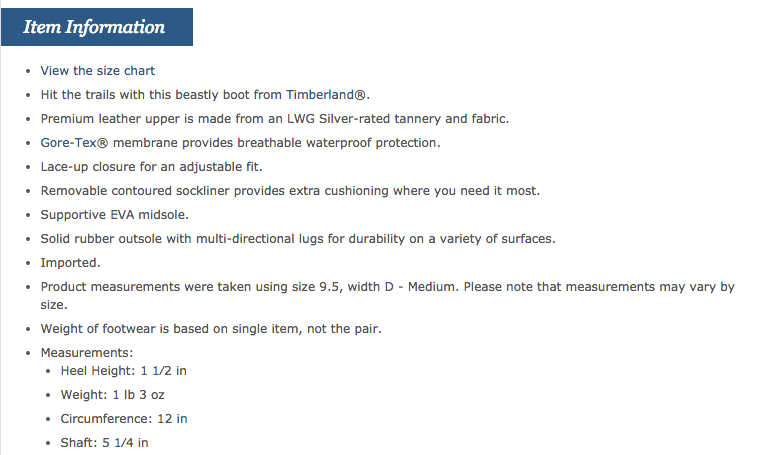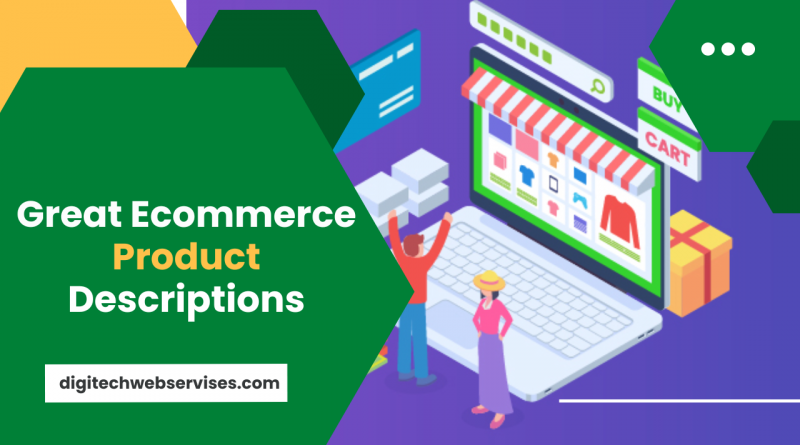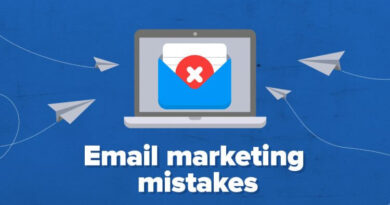8 tips to develop the Perfect Product Description In Your Ecommerce
A good description of a product in an ecommerce can be the difference between a purchase or a cart abandonment. Find out what you need to create the perfect product description and achieve more sales!
Surely you know that the description of the product in e-commerce is extremely important to increase your sales.
However, it is a mistake to think that they should only list the resources and characteristics of the products.
In addition to establishing the authority of your store and helping your customer to better understand the solution you are selling, a well-done description positively influences your SEO strategy .
This means that more people will find your products and have the opportunity to buy them if you make a relevant description. The main objectives of a good product description in an ecommerce are to attract visitors and transform these people into customers.
Therefore, your SEO and conversion optimization strategies should include well written, engaging and persuasive product descriptions.
Do you want to know how to make this improvement in your ecommerce? So, continue reading and discover how to take advantage of your sales with killer descriptions!
What is the product description?
Table of Contents
Product descriptions are the e-commerce content that informs, educates, and convinces customers to buy.
They represent your company when the user enters the page to make a purchase and, therefore, they must answer simple questions, such as:
- What is the product
- What is it made and where does it come from?
- What makes it different from other products?
- How is the product used?
- What problems does it solve?
A good description should highlight the main characteristics of the product and its benefits, to provide the visitor with enough information and arguments for them to click on the buy button.
To start crafting the text on your product page, you need to understand the impact the description has on the buying process.
What is the importance of a good product description?
Product descriptions play two very important roles.
Firstly, they influence the conversion rate of a site. Secondly, they contribute to search engine optimization.
From the users’ point of view
This is the most important point of view, right? If you do it well, ranking on Google will be a natural consequence.
Build trust
A successful text is a sign of professionalism. An interesting and original text is a sign of knowledge and quality.
Description is an opportunity to show your commitment to quality in all aspects of your business. She positions you as an authority capable of improving the client’s life.
Mistrust is one of the main barriers to buying online. Therefore, it seeks to generate credibility and conquer the public.
Expand desire
Your customers cannot physically feel the product, so the description is the tool you have to answer questions and spark your imagination.
You must offer the information that customers need to buy the product they are looking for. The description realizes the advantages and shows the customer that he needs to buy – now – to solve his problem.
Don’t overload your service channels
Without the descriptions, users can get confused with the products on your website and end up giving up.
In addition to driving your traffic away, products without descriptions can overload your customer service channels.
Even a great way to understand the doubts you need to heal in your texts is to check the emails you have received.
You can update the text to answer key questions, reduce emails and customer calls.
From the point of view of search engines
Product descriptions are one of the most underrated SEO tactics.
In addition to informing and influencing your visitors to buy your products, descriptions reach important keywords and drive more traffic to your store.
Search engines cannot read images, and bots need the text to contextualize each page.
That is, product pages with complete information allow search engines to present results that satisfy the need of the person making the query.
To achieve those results, you must first follow some good practices that will captivate customers and bring more visitors.
What CANNOT be missing in a product description
1. What is it produced from?
Describe what the product is produced from, or in the case of a service, what it includes.
Anyone who thinks about buying a wallet wants to know if it was produced in genuine or synthetic leather, for example.
Here is a good suggestion to speed up the process: contact the brand or the factory and ask for the technical information. They have all this at hand.
The ideal is to collect this information and organize it in a unique way, to avoid repeated texts.
Oh, don’t forget to advise if the product is produced locally, uses organic or sustainable materials. It is an easy way to build confidence in the quality of your products.
2. Detailed measurements
The dimensions of your products must be clear. Can you imagine buying a piece of furniture on the Internet without knowing if it fits in your house?
The suggestion just mentioned is also valid here. You can request the technical information with all the measures, or mount a receipt sheet and ask your dealer, or person in charge, to take the important measures while checking the cargo.
It is even a great way to involve other people in your operation and show the importance of the smallest details in e-commerce.
If you sell clothes, “P, M, G” is not enough. You need to include the measurements for each part of the body.
In addition to making the client more secure, you still reduce the possibility of changes.
3. Write your text for someone in a hurry
The format of the product description is as important as the content. You need to retain your visitor’s attention.
Make things easier for your visitors – they are probably with multiple tabs open in the browser.
- highlight bold words and use captions to drive the reader’s eyes where you want;
- bullet point topics (like the ones you are reading now) are a great way to group product specifications in a readable way;
- Presenting information in small blocks, dotted with icons, can help improve retention.
Now that we have talked about the basics, I will tell you some tips to go further and write descriptions of killer products. Let’s keep going!
7 tips to create the perfect product description
An excellent product description in ecommerce attracts the reader. And, to seduce your audience, the first step is to know and be seduced by your product.
Fall in love with what you sell. Study its utilities. Marvel at the details.
And then it begins …
1. Write to the person who would love to know your product
If you are selling something, I hope you know who your target audience is and who you are. You have developed your product with someone in mind, right?
No matter the type of text you will write, you should always write it for one person, and not for a group of strangers.
Create a person and touch the frustration, pain and desires of someone specific.
When you write for someone, that someone feels that you understand. At that time, click “Add to cart” and you receive your payment.
2. Search for keywords
Filling pages with keywords was a practice in SEO primordial. Fortunately, changes in search engine algorithms made searches smarter.
This change allows copywriters to be more creative in producing relevant customer-focused descriptions.
Keywords should naturally appear in titles and descriptions, as they will help customers find the product on your site, marketplaces and search engines.
The best way to start is to use a keyword search tool, such as the Google Keyword Planner , to determine the most popular queries. You can also use the Google Search Console to find out which words drive traffic to your pages.
Be aware of keywords with high search volume, but also identify long-tail terms . They have less research, but they convert well and are easier to position.
3. Use a tone of voice consistent with your brand
After identifying the most effective keywords, you can think about how to convey product information using these related terms and synonyms, in texts that speak your person’s language, in your brand’s unique tone of voice.
Paying attention to keywords is very important, but not to the detriment of your brand identity and good communication with your audience.
Here are two examples of descriptions for leather jackets. Texts have similar keywords to describe the characteristics, but use different approaches to connect with the target audience.

The choice of the words “classic,” “original that invented the style,” and “long-term durability” hints at the idea of a timeless product that is an investment, not a fashion trend.
The Schott NYC product page has a long description focused on the quality of the material and the complete history of the brand, responsible for inventing this style of jacket.
The modern luxury brand:

The All Saints description also alludes to the idea of a motorcycle jacket, but instead of citing tradition, use the word “new.” Instead of highlighting the material, highlight the aesthetic details. “Crafted” induces the idea of craftsmanship, to value the luxurious side of the product.
Wanting to engage young audiences, they take advantage of the product page to suggest sharing images on social media.
A young fast fashion brand, could put aside the material to emphasize how the product is the latest trend and spend a relaxed attitude.
The important thing is to understand what the public is looking for and show, through the description, that the product is capable of meeting expectations. For that, you can use the following suggestion:
4. Tell a story
Always think of your audience. Generic descriptions tend to be ineffective as they do not address the difficulties and goals of any specific group.
Understanding your audience – speaking their language – plays a key role in creating an engaging and relevant product description.
Product descriptions should not only convey what your product is, but also get closer to the customer’s reality and connect with emotions to stimulate a purchase decision.
A survey conducted by Nielsen , a leader in market research, concluded that emotions are key to the success of advertising.
These same emotional triggers can be applied on ecommerce sites, from the moment the customer arrives at your site to the time they go to your cart.
Do you want advice to address your darkest desires and emotions? Tell a story . Describe what it would be like to have the product in the hands, on the body, on the feet, in life… It shows how it fits into the client’s daily life.
Kaufman Mercantile always uses situation references in its product descriptions:

The description of the previous product refers to the “sacred ritual of preparing a cup of coffee upon waking up”, a “moment of peace before a day of rush”.
Buffer has an excellent text on the science of emotion in marketing and what emotions stimulate the reader to act (share, buy, reject).
We also have some very interesting materials for you to have ideas of how to connect with the emotions of your customers:
Be creative but be careful with very long texts. Mobile viewing has become an increasingly important factor for search positioning.
Creative and relevant but short texts are best for your mobile device optimization practices.
5. Connect attributes and benefits
It is important to list the attributes and characteristics of your product. This type of information can be located under your main description or in a separate tab, depending on the design of your site.
There you must highlight the main benefit that each attribute offers the client. Remember: he buys solutions.
Attributes are what your product has or includes, such as “128GB memory card” or “Reinforced stitching.”
The benefits are what your product does to improve the life of your client, such as “Don’t worry about running out of space for your photos on vacation” or “Durably built product, so you can use them for years.”
Use this technique when you are listing the materials and construction of your product, as Zappos does :

Huckberry is also a great example of how to display technical information without intimidating customers. Each product has lists of characteristics, materials and measurements, in topics below the main description.
This design enables the store to answer common product questions, pass technical information to the most sophisticated customer, and show new customers that the brand is an expert on the subject.

6. Use sensory words
When telling your story and describing the attributes and benefits, use sensory words to work with the reader’s feelings.
Sensory adjectives are powerful tools to help your customers imagine your product while they are reading a text.
Nespresso is an excellent example of how to use emotional triggers. When describing coffee capsules, he uses descriptive words like “rich” and “subtle”, making the customer “feel” the taste and smell of coffee.
To value the machines, they choose words like “innovative”, “beauty” and “unique”. These are terms used to assign value to your espresso machines.
I don’t know what you think, but I would rather eat a “creamy chocolate mousse that melts in your mouth” than a “chocolate mousse”.
Language that refers to touch, taste, smell, and sound illuminates an area of the brain known as the somatosensory cortex.
This is why a phrase like “The cold water ran silently down her ankles” has more impact than “She put her feet in the river.”
Combine your product with words that evoke the sensations of the product attributes. For example:
Words that pass the idea of texture, like “crispy” and “tender,” can be used to describe food. Instead, “silky” or “smooth” can be used for clothing and even beauty products.
Describing a wooden table? Use words that evoke solidity and strength, such as “robust”, “heavy”, “resistant”, “reliable”, etc.
Running shoes? Good adjectives can be “light”, “fast” and “soft”.
An example of how to combine a little of what we have talked about so far:
“These shoes have an innovative sole made with a light high-density rubber, providing a soft tread that conserves your energy, allowing for longer workouts.”
The trick is to find the right balance and be very specific when highlighting the strengths of your products.
Filling the description with vague adjectives can leave your customers confused and your text devoid of any real meaning.
Fire up your clients’ somato sensory crusts!
7. Social proof, a powerful weapon of persuasion
You probably already use some feedback and evaluation tool in your ecommerce, but have you already thought about using those evaluations to make your product descriptions more attractive?
Find your comments, positive and negative, and use them to directly address fears and illustrate the unexpected benefits in your product description.
If a review says, “I was afraid this drone wasn’t powerful enough to hit my neighbor’s yard,” add something like “Are you afraid this drone isn’t powerful enough?” Thanks to a highly durable rechargeable lithium battery, you can fly all over your neighborhood, as many times as you want! ”
Regardless of your store’s niche and audience, improving your product descriptions can have a big impact on your organic traffic and conversion rates.
But don’t stop here. Take the advice from our e-book on content strategies for ecommerce and explore more techniques to attract customers, convert more sales and increase your income.



